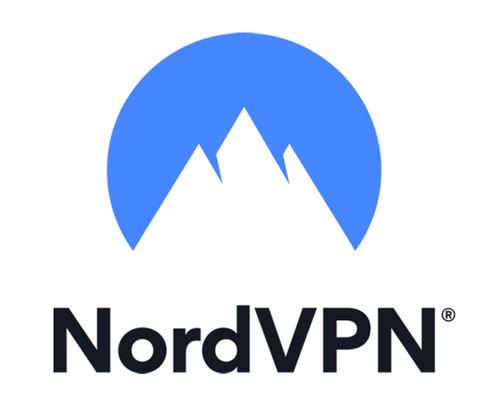Telephone

Phone numbers in Canada follow a standard eleven-digit format for both mobile and landline numbers: the country code, an area code, a central office code, and a station code, 1 (XXX) XXX-XXXX.
The country code for Canada is +1.
- To dial Canada internationally, you must dial 01 +1 (XXX) XXX-XXXX.
- To call between provinces or regions in Canada, you must dial (XXX) XXX-XXX.
- To dial a local phone number in Canada, you must dial XXX-XXXX.
Area codes in Canada are: Alberta – 403, 587, 780; British Columbia – 250, 604, 778; Manitoba – 204; New Brunswick – 506; Newfoundland and Labrador – 709; Nova Scotia and Prince Edward Island – 902; Ontario – 226, 249, 289, 343, 416, 519, 613, 647, 705, 807, 905; Quebec – 418, 438, 450, 514, 579, 581, 819; Saskatchewan – 306; Yukon and Northwest Territories and Nunavut – 867.
Fixed Line
Fixed line telephone services are available from national companies Telus, Shaw, and Rogers, as well as several smaller providers.
Fixed line services start at $25 per month. You may be charged additional fees for installation, caller ID, call forwarding, voice mail, call screening, call waiting, call return, three-way calling, 411 (phone directory) services, 711 (message relay for hearing or speech impaired) services, second line, call blocking, and 911 (emergency) services.
Long distance plans are available from $7/month to Asia, $10/month to India, $20/month to the US and Canada, $25/month to Europe, or $0.05-$8/minute to any international destination. You can also purchase prepaid long distance calling cards for use in Canada.
You may be charged monthly fees to rent a phone from your provider.
GST and PST or HST is payable on all fixed line telephone services in Canada, including installation fees.
Installation fees are applicable, although some providers may offer free installation as an incentive. Fixed line telephone services in Canada can usually be bundled with Internet, TV, and mobile for extra savings. Fixed line telephone services are normally offered on 1, 2 and 3 year contracts. Disconnection fees are applicable if you break your contract.
Most fixed line telephone providers allow you to access your account and pay bills online, by telephone, or personally at an office or outlet.
Opening an Account
To open a fixed line telephone account, contact a local service provider. Installation wait times are generally short. You will be asked to provide basic contact information, as well as a credit cart number or credit history. If you do not have a credit history in Canada you may be required to pay a deposit on your account, or have a co-signer guarantee your account.
In most cases, you can select your own phone number from a list of available phone numbers. You can also transfer phone numbers between providers and accounts.
Mobile/Cell Phones
Cellphone GSM frequencies in Canada are 850/1900. Mobiles operating on 850MHz or 1900MHz will work in Canada. Nationwide 3G/3GS/4G coverage is available.
Currently, mobile phone providers in Canada support either CDMA or GSM, although most are moving away from CDMA towards GSM.
Mobile phone services are available from national companies Bell, Telus, Rogers, and from smaller companies Kodoo, Fido, Virgin Mobile, Sasktel, MTS, Wind, Videotron, and Public Module. Mobile fees in Canada are expensive compared to Europe and Asia, and comparable with the United States.
Mobile phone plans in Canada are complex and constantly changing. Mobile plans are available in pre-paid and monthly plan options. You can purchase pre-packaged monthly plans, or bundle together different services to create a customized monthly plan.
Pre-paid plans start from $20/month. Basic mobile monthly plans start from $27/month, and range up to $250/month. Billing for over use of data, over use of daytime, evening and weekend minutes, or long distance charges can sometimes increase your bill by hundreds or thousands of dollars.
In Canada, evenings are defined as anytime after 5 to 8 pm. Weekends are defined as 5 to 8 pm Friday to 6 to 8 am Monday.
You may be charged additional fees for caller ID, call forwarding, voice mail, call screening, call waiting, call return, three-way calling, 411 (phone directory) services, 711 (message relay for hearing or speech impaired) services, second line, call blocking, and 911 (emergency) services.
You will be charged additional fees for roaming between regions and provinces, and when travelling internationally. Typical international rates are $1.45-$7 per minute of talk time, $0.60 per text/SMS, and $5-$16/MB data.
To get the best plan and price for your needs, it is highly recommended that you shop around. Cheaper prices are often offered to students and seniors. Multiple cell phone plans in one family can also be bundled together for savings.
Some service providers offer free calling or text messages/SMS between you and 5 to 10 other numbers (regardless of their service provider).
Free ($0) mobile phones are available on most monthly plans, subject to multi-year contracts. Cell phone contracts are typically 1, 2 or 3-years. If you purchase your mobile phone outright, you may benefit from cheaper rate plans. Users signing up for mobile telephone accounts with pre-purchased unlocked phones can also benefit from discounts.
GST and PST or HST is payable on all mobile telephone services in Canada.
Most mobile phone providers allow you to access your account and pay bills online, by telephone, or personally at an office or outlet.
Opening an account
To obtain mobile services, visit a local service provider. You will be asked to provide basic contact information, as well as a credit cart number or credit history. If you do not have a credit history in Canada you may be required to pay a deposit on your account, or have a co-signer guarantee your account.
In most cases, you can select your own phone number from a list of available phone numbers. You can also transfer phone numbers between providers and accounts.
Phone Directories
Telephone directories are available from the Yellow Pages Canada and 411.ca
By Jess Gerrow, who traded city life in Canada for island life in the Mediterranean two years ago. She is a postgraduate marketing student, blogger, and freelance writer.
- My Life Abroad -
A selection of expat stories

"A fun compulsive read!"
J. Matcham, Amazon
"I strongly advise people ready to live abroad to read this book!"
Patrice, Amazon

 NordVPN
NordVPN